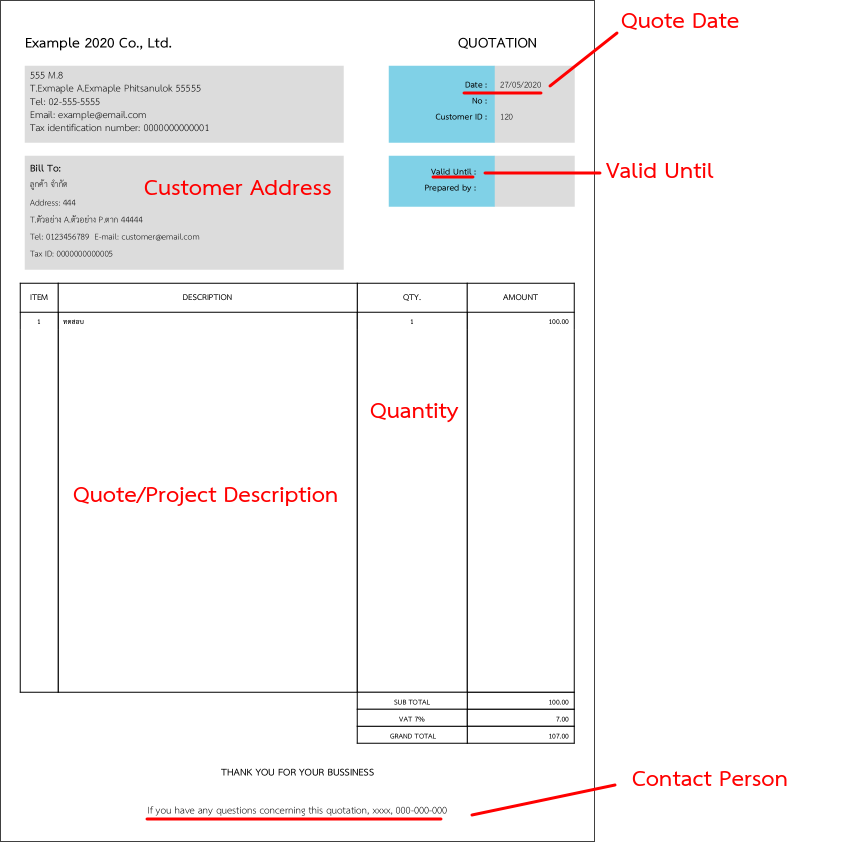A quotation is a summary of the cost of hiring a business along with the amount of work the business needs to do for its client. A quotation Template is the pre-contrived format into which a business can place its information. Usually, a customer has a budget for the work it wants to be done. The quotation provides the customer that a business’s rates and, therefore, simplifies the process of choosing a business to hire.
Goods and services are definitely offered at a price. It is important that these prices be made known to the potential buyers beforehand to allow them to make more informed decisions thereafter. The quotation is the business document that makes the prices known to the parties of interest.
What are the Features of Price Quotation Form?

- Quote Date
A quote date is the date in which the quote is sent. The quotation may have been prepared by the seller a few days before it is sent, but it should only carry the date it is sent to the buyer.
Unlike when sent electronically, it may not get to the buyer on this date if sent physically. Therefore, it is advisable to extend the validity period in this case.
- Valid Until
This is the validity period of the quotation, i.e. the date till which the current quote would be valid. If the business will be executing a project for the company, the validity period should be the projected completion time for the project.
In the case of a product, the buyer may be given a week or more to complete the purchase. This is because the prices of goods may be subject to change.
- Quote number
Each quotation sent to customers must have a unique number, which is important for identification purposes. With a quote number, you can easily track each quotation.
A customer might place the same order at different times, which is why you need to have a unique quote number for each order to easily differentiate them.
- Customer ID
Similar to the quote number, every customer must have a unique customer ID. Two different customers can have the same name or work from the same location. But with a unique customer ID, you can easily identify customers with similar data. This can also be useful for proper order classification, with the key being the customer’s ID.
- Customer Address
This is the address of the customer to which the quotation is being raised. When dealing with an organization, the customer address should be the official address of the organization.
In this case, it should be titled, Company Address. If the company has different branches, it should be addressed to the branch making the request, respective of the delivery location.
- Quote/Project Description
Here, we describe each product or project we are embarking on to give the customer enough details about what he/she will get. For example, the description for a bag of cement will include the brand name and size.
Similarly, when listing food in a quotation, an event planner should give details about the meals on the menu—name, and quantifier of each meal. E.g. spring roll trays, pack of burger and fries, etc.
- Quantity
The quantity of each item in the description should also be added. Using the meal example highlighted above, the number of spring roll trays maybe 2, while we have 50/packs of burger and fries.
- Special Notes/ Instructions
This is where instructions on the quote are entered. E.g. “This quote is only valid for purchases whose payment will be made immediately. The prices are subject to a 2% processing fee for an extended payment period.”
- Terms & Conditions
This include any important points like payment terms, confirmation terms, etc.
- Contact Person
In case the customer needs any further clarification, the contact person is the one they will reach out to me. Therefore, the contact person could be a customer care agent or the project lead.
